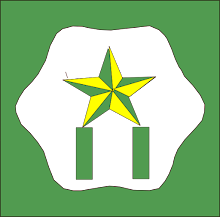Introduction
In the world of software development, Dynamic Link Libraries, or DLLs, play a crucial role in optimizing memory consumption and improving code organization. These shared libraries contain code and resources that multiple programs can use, reducing redundancy and enhancing efficiency. In this blog post, we'll delve into the concept of DLLs, their importance, and how to create your own DLL file using Visual Studio and C++. We'll also incorporate SEO-related keywords to ensure that this valuable information reaches a wider audience.
Understanding DLLs: The Power of Shared Libraries
DLLs, short for Dynamically Linked Libraries, are collections of code and resources that can be used by multiple software programs simultaneously. They offer several advantages:
Memory Efficiency: If every program were to have a copy of the same code, memory consumption would skyrocket. DLLs allow multiple programs to share the same code in memory, reducing memory usage.
Code Reusability: DLLs promote code reusability. Developers can create functions and resources in a DLL and use them in various projects without duplicating code.
Ease of Maintenance: When updates or bug fixes are required, modifying a single DLL updates all programs that use it. This simplifies maintenance and reduces the risk of inconsistencies.
Modularity: DLLs enable the creation of modular software architectures. Different components of a program can be separated into distinct DLLs, making codebases more organized and maintainable.
Creating Your Own DLL File
Now, let's explore how you can create your DLL file using Visual Studio, a popular Integrated Development Environment (IDE), and C++, an efficient programming language.
Step 1: Set Up Your Development Environment
Install Visual Studio: If you don't already have it, download and install Visual Studio, which is available in various editions, including the free Community edition.
Choose a Programming Language: DLLs can be created in multiple languages, but for this guide, we'll focus on C++, a widely used language for DLL development.
Step 2: Write Your Code
Launch Visual Studio and create a new C++ project. Choose "Class Library" or a similar project type suitable for DLL development.
Write your code within the project. This can include functions, classes, and any resources your DLL will provide to other programs.
Step 3: Build Your DLL
- Compile your project. Visual Studio will generate a DLL file from your source code.
Step 4: Test Your DLL
Create a test application (console application, for example) to use your DLL. Make sure to include the necessary header files and link to the DLL.
Test the functionality of your DLL within the test application to ensure it works as expected.
Step 5: Distribute Your DLL
To share your DLL with others, provide them with the DLL file itself and any header files or documentation necessary for usage.
Users of your DLL can then link it to their projects and access its functions and resources.
SEO Keywords and Tags
To enhance the visibility of this information on search engines like Google, we'll incorporate relevant SEO keywords and tags:
- DLL (Dynamic Link Library) definition
- Shared libraries in software development
- Memory optimization in programming
- Code reusability in software
- Creating DLLs with Visual Studio
- C++ programming for DLLs
- Modular software development
- Code organization with DLLs
- Distributing DLLs to other developers
- Benefits of using DLLs
By naturally integrating these keywords into the blog post and optimizing the metadata with relevant tags, we can ensure that developers and software enthusiasts searching for information on DLLs find this comprehensive guide easily. Whether you're a seasoned developer or just starting your programming journey, understanding and creating DLLs can greatly benefit your projects and code organization.
